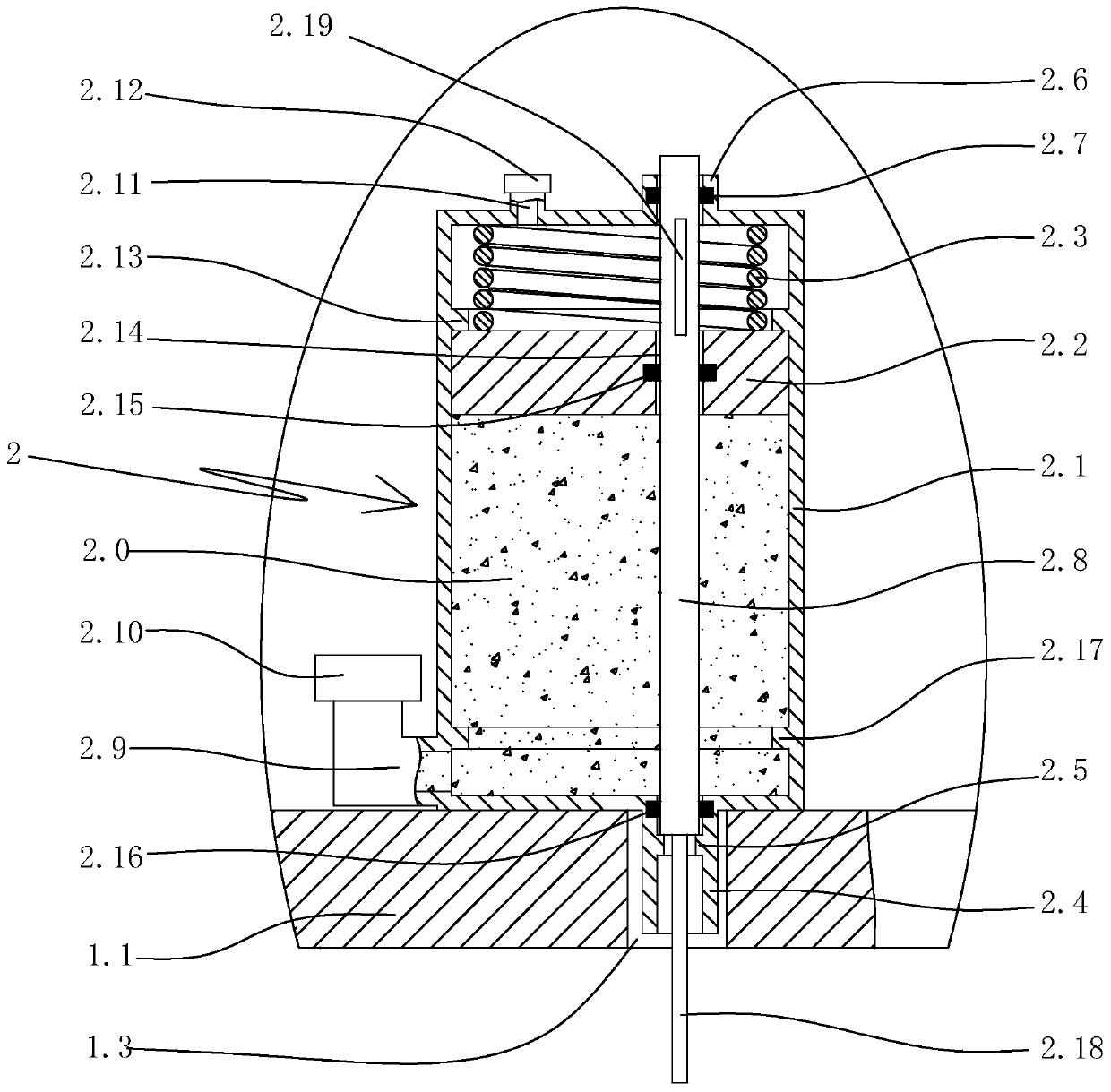Ocean bottom seismograph equipment capable of improving signal-to-noise ratio
A seismograph, signal-to-noise ratio technology, applied in seismology, seismic signal receivers, instruments, etc., can solve the problems of command reception failure, reduce signal-to-noise ratio, small contact area, etc., achieve stable and reliable structure, improve signal-to-noise ratio, the effect of improving quality
- Summary
- Abstract
- Description
- Claims
- Application Information
AI Technical Summary
Problems solved by technology
Method used
Image
Examples
specific Embodiment 1
[0035] Specific embodiment one: as figure 1 As shown, a submarine seismograph device capable of improving the signal-to-noise ratio includes a seismograph 3 , a protective case 4 , a ballast anchor 1 and a seismograph installation structure 5 . Seismographs are used to detect vibration signals from the formations on the seafloor, and the buoyancy force of the seismograph is greater than the force of gravity. The protective case is used to protect the seismograph. The seismograph is fixedly installed in the protective shell. Seismograph installation structure 5 comprises positioning groove 5.1 with the opening facing upwards arranged on the ballast anchor, positioning block 5.2 arranged at the bottom of the protective shell for cooperating with the positioning groove, a closed cavity arranged in the positioning block, and a The electromagnet 5.3 in the airtight cavity, the battery provided in the airtight cavity to provide power for the electromagnet, and the iron plate 5.4 e...
PUM
 Login to View More
Login to View More Abstract
Description
Claims
Application Information
 Login to View More
Login to View More - R&D
- Intellectual Property
- Life Sciences
- Materials
- Tech Scout
- Unparalleled Data Quality
- Higher Quality Content
- 60% Fewer Hallucinations
Browse by: Latest US Patents, China's latest patents, Technical Efficacy Thesaurus, Application Domain, Technology Topic, Popular Technical Reports.
© 2025 PatSnap. All rights reserved.Legal|Privacy policy|Modern Slavery Act Transparency Statement|Sitemap|About US| Contact US: help@patsnap.com



